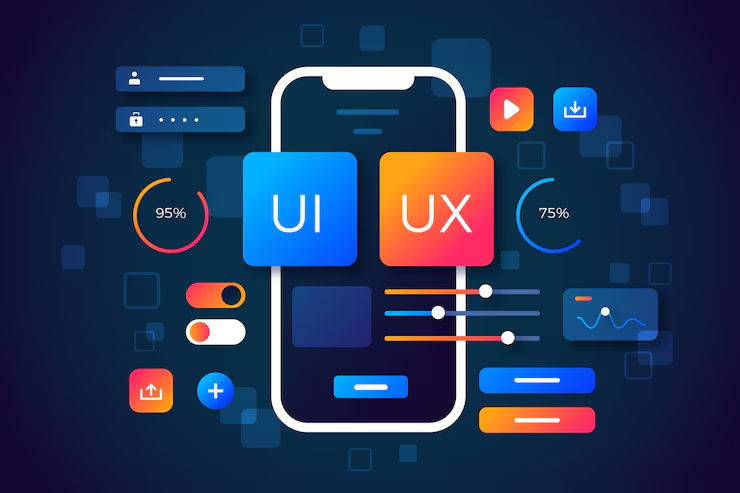In today’s digital world, appealing visual design and smooth user experience are crucial for online success. This trends continue to evolve as technology advances and user expectations change. Whether you manage a business website, mobile application, or an online store, understanding these trends can help you create stronger engagement, build trust, and offer a meaningful digital experience. This article explains the latest UI and UX trends that designers and brands are using to attract and retain users.
What Are UI and UX?
Before exploring, it’s important to understand what UI and UX actually mean:
- UI (User Interface): Refers to the visual design of buttons, layouts, icons, colors, and typography.
- UX (User Experience): Refers to how users feel when interacting with a website or application—whether it’s easy, smooth, confusing, or enjoyable.
Both UI and UX work together to create a digital experience that looks good and functions effectively.
Why UI/UX Design Trends Matter
Following the latest, it is essential because:
- Users decide within seconds whether to stay on or leave a page.
- Modern and intuitive designs increase trust and credibility.
- Improved usability leads to higher conversions and sales.
- Good UI/UX creates a positive emotional connection with users.
Keeping your digital interface updated means adapting to how users think, feel, and behave online.
Top UI/UX Design Trends to Watch
1. Minimalist and Clean Layouts
Minimalism is one of the most popular these today. Designers focus on simplicity, using whitespace, clean typography, and simple navigation. This reduces distraction and keeps users focused on core content.
Why it works:
- Faster load time
- Easy scanning and reading
- Professional and elegant brand appearance
2. Dark Mode Experiences
Dark mode has expanded from apps to full websites. It reduces eye strain, saves battery, and provides a modern aesthetic.
Where it’s used:
- Social media apps
- Productivity tools
- E-commerce platforms
Users now expect a dark mode toggle option as part of standard UI.
3. Bold and Expressive Typography
Typography is no longer just for readability—it’s a design feature itself. Large, bold, artistic fonts help communicate brand personality and draw attention to key messages.
Examples:
- Extra-large headings
- Artistic serif fonts
- Playful handwritten fonts
This trend adds dynamism and uniqueness to digital experiences.
4. Micro-Interactions for Engagement
Micro-interactions are small animations or responses that occur when users perform actions, such as clicking a button or hovering over an image.
They help:
- Make interaction feel alive
- Provide feedback to the user
- Enhance connection with the interface
These subtle effects improve user satisfaction and usability.
5. AI-Driven Personalization
Artificial intelligence is now influencing this by customizing digital experiences for each user. AI tracks behavior to recommend content, adjust layouts, and tailor product suggestions.
Examples include:
- Personalized shopping recommendations
- Customized news feeds
- Adaptive dashboards
This leads to a more personal and engaging user journey.
6. 3D Illustrations and Immersive Visuals
3D graphics create depth and visual interest. Thanks to improved rendering technology, 3D elements are becoming more lightweight and usable across websites and mobile apps.
This trend is popular in:
- Product showcases
- Landing pages
- Creative portfolios
It gives brands a futuristic and premium feel.
7. Voice User Interface Integration
With the rise of voice assistants, many platforms are now integrating voice navigation. This improves accessibility and offers a hands-free option for interaction.
Used in:
- Smart devices
- Shopping apps
- Virtual assistant apps
Voice-based experiences continue to expand rapidly.
How to Apply UI/UX Design Trends to Your Website or App
- Keep navigation simple and intuitive
Users should never struggle to find what they need. - Use consistent color schemes and typography
Brand harmony builds recognition. - Focus on accessibility
Ensure design works for all users, including those with visual or motor limitations. - Test your interface with real users
Feedback helps refine and improve the overall experience. - Regularly update design elements
Technology and expectations always evolve.

